It may very well be that Disaster Transport was doomed from the start. In its early days, the ride probably did hold its own as a seasonal park's budget-friendly version of Space Mountain with Star Tours thrown in for good measure. The $4 million Dick Kinzel and company had spent turning the $3 million ride into a space epic had created a unique if oversold family attraction of Avalanche Run.
The problem is, year after year after year, more and more of the ride’s once at-least-noteworthy special effects, lighting elements, and props fell into disrepair, eventually disappearing altogether. The pre-show was axed after only a few years.
Then, any semblance of a storyline (thin as it might’ve been anyway) disappeared when the better part of the queue was repurposed as a haunted house for the park’s annual Halloweekends event around the new millennium, with guests rerouted through a new entrance into what was the final queue room – the Repair Bay.
Even then, entering guests would pass by a mobile cart hocking light-up spinners and glow sticks typically reserved for fireworks shows. For a time under Dick Kinzel’s infamous penny-pinching regime, the park even had the gall to sell paper “3D glasses” in the queue for $1.00 a pop – an absolute and astounding offense to fans' sensibilities.
Lost Legacy
By the 21st century, Disaster Transport was living up to its name. The ride took place mostly in the dark – an agonizing 70-second ascent up what must’ve felt like the slowest, dustiest, most retro lift hill in the park, followed by a 50 second meandering descent with practically nothing to see, and certainly nothing worth seeing. Disaster Transport's biggest selling point in the 21st century was probably its air conditioning... when it worked.
While the state of Disaster Transport was truly a blemish on Cedar Point’s otherwise storied coaster collection, the ride’s legacy was even more damaging. Unfortunately, Dick Kinzel and company had been burned by Disaster Transport and seemed to have learned a self-imposed lesson: they apparently vowed that theming would never again trump thrills. The cost and upkeep required for even simple special effects, fog, theatrical lighting, and simple animatronics had been too much for the thrill park to commit to, and the half-baked ride left behind was an embarassment.
You’ll see this painful reminder today in the fact that Cedar Point – often regarded as one of the “best parks in the world” today – has zero dark rides. None. It’s strange to consider that this industry-leading park has no opportunities to get out of the sun unless you step into a restaurant or a show. Sure, a thrill park is a thrill park. But Cedar Point has no dark rides, no indoor, themed coasters, nothing. Instead, it’s one giant roller coaster after another after another dotted down the midway.
Elsewhere
Image: Cedar Fair / Viacom
The thing is, stories, thoughtful themes, and dark ride elements do have a place, even in thrill parks! Just a few hours southwest, Paramount’s Kings Island did things differently... The Cincinnati park's ride lineup included some impressive rides blending storytelling and thrills.
The Italian Job: Stunt Track, a relatively simple but effective family launched coaster through the 2005 film's big finale in ¾ scale MINI Coopers. The ride's explosive circuit included all the dressings of a movie set and some phenomenal special effects throughout.
Top Gun: The Jet Coaster was a simple application of theme overtop a family suspended, swinging coaster, complete with a "aircraft carrier" station, billowing fog, and a famous soundtrack.
Image: Viacom / CBS / Paramount Parks
The Outer Limits: Flight of Fear, housed in a government facility's Bureau of Paranormal Research hangar, was a crown jewel. Guests would enter the facility's press hangar to see the incredible new findings of the government first-hand: a landed alien saucer. Stepping inside, guests would be abducted into a Twilight Zone style storyline, launched into one of the world's most twisted, convoluted, impressive roller coasters.
Scooby-Doo and the Haunted Castle was a Sally family dark ride through a blacklight game of ghost-tag.
Adventure Express sent guests along one of the most impressive family mine train routes in the world, through caves, ancient temples, tombs, and bamboo groves with mist, water, crawling vines, animatronics, and more.
And the king of them all, Kings Island's TOMB RAIDER: The Ride was arguably one of the best themed rides to ever exist, and certainly one of the most impressive outside of California and Florida. The mysterious ride was so unique, riders often didn't know kind of ride it was even once they were seated on-board. So intriguing was this one-of-a-kind experience, we chronicled it in its own in-depth Lost Legends - Tomb Raider: The Ride feature.
At Kings Island and its fellow Paramount Parks, impressive thrills coexisted within themed lands, with even a touch of cinematic storytelling and a commitment to detail and special effects raising the parks in renown. It was a skillful blending that Cedar Fair had attempted once – and only once. Maybe it was alright, though! After all, Cedar Fair parks could stay firmly in the thrill-amusement park market with Paramount's aimed somewhere else entirely – family theme parks.
Why go into detail about the difference Paramount's details made?
In 2006 Cedar Fair actually acquired Paramount Parks, including Kings Island. The whole set of Paramount Parks had skillfully blended theme and thrills in many spots, but the loss of Paramount's licensing required of Cedar Fair that it eliminate overt movie references and reimagine some of the theatrical theming scattered around the parks. Cedar Fair would need to re-theme some of Paramount's attractions, and that meant finally facing their fear of storytelling and special effects head on... Didn't it?
Image: Jeremy Thompson, Flickr
The Italian Job Stunt Track was renamed Backlot Stunt Coaster (its once-detailed ¾ scale MINI Coopers stripped to vaguely car-shaped blobs, above, also losing its splashdown, fire effects, and on-board audio); FACE/OFF was rebranded the less-inspired Invertigo; Scooby Doo and the Haunted Castle dark rides across the Paramount Parks chain became the groan-worthy, generic Boo Blasters on Boo Hill (…that's the best someone could come up with?); and Top Gun: The Jet Coaster became Flight Deck – seemingly the most generic aviation-themed name the company could trademark.
It was as if Cedar Fair set out to select the most generic versions of the rides' previous name rather than inventing new stories of their own, inherently dooming Paramount’s rides to forever be referred to by their former identities. (Who, after all, would concede to calling the drop tower Drop Tower when Paramount’s Drop Zone: Stunt Tower was so much more clever?) Most painfully, that world-class, Disney-esque TOMB RAIDER: The Ride became an abysmal ride called The Crypt as detailed in the must-read in-depth story behind one of the best themed rides ever, Lost Legends – TOMB RAIDER: The Ride.
(Kinzel's Cedar Fair treated Six Flags Worlds of Adventure with as much reverence when they purchased the world’s largest theme park and closed it forever without warning – the debilitating tale of Geauga Lake, one of the most popular stories we’ve ever told here.)
Industry experts allege that at every step of the way, Kinzel was informed (subconsciously, perhaps) by the failure of Disaster Transport and its dismal descent into disrepair. The millions spent changing Avalanche Run had changed him, too, and Cedar Fair would avoid theming at all costs. That's why Paramount Parks were de-themed rather than re-themed, and why the future of the former Paramount Parks looked bleak for a time as locals wrestled with disappearing details, forgotten dark rides, and.... well... rides called Flight Deck and Drop Tower.
Theming today
The silver lining might be that Dick Kinzel left Cedar Fair in 2012 after that failed sell-out we mentioned earlier, passing the company on to Matt Ouimet, a former president of the Disneyland Resort. Ouimet has an impressive résumé of his own – he’s the one who took charge of Disneyland after Michael Eisner’s (eerily similar) penny-pinching era and frosty departure at Disney, with Ouimet leading the charge to bring Disneyland back to life.
Image: Cedar Fair
Under Ouimet, the company has seen a turnaround in its attention to detail. The historic (pre-Cedar Fair) dark rides at Knott’s Berry Farm were fantastically freshened while a new slew of dark rides have migrated into Cedar Fair’s parks under an ongoing initiative. Ouimet, it seems, recognized the importance of themed rides and lands (chalk that up to his Disneyland past) and has actually set out to make sure that, even in parks primarily and unapologetically dedicated to thrills, details (re)appear.
Each park has been given license to celebrate its own history and story and atmosphere rather than carbon-copying names and identities and themes across parks, all while elements of Paramount’s leftover theming have been restored. As themed lands and legacy names are restored across the chain, new dark rides, seasonal celebrations, shows, and flat rides prove that in the new Cedar Fair, we're likely to see more than just giant roller coasters opening every summer.
Image: Joel Rogers, CoasterGallery.com. All rights reserved; used with permission.
When new coasters do arrive, they're placed in themed lands that make sense with light theming, like Banshee's foggy Irish moors cemetery queue (complete with a towering tombstone and eternal flame for Son of Beast) and the ride's Irish chapel station, with the coaster exiting out of a broken stained glass window.
To be clear, Cedar Fair’s parks are still thrill parks and are likely to stay that way, but Ouimet oversaw the infusion of character and elements of storytelling back into the company's lineup. Little touches like that elevate Cedar Fair's parks back toward the healthy balance Paramount had struck.
One thing ride that wasn't given a rebirth of theming: Disaster Transport.
Disaster Demolition
Image: Cedar Fair
To review, Disaster Transport opened in 1985 and lost its luster in Cedar Point’s ride lineup pretty quickly. It was overshadowed by the debut of Magnum XL-200 the year before which set the park on its thrill-focused course.
Meanwhile, guests quickly discovered that building a box around Avalanche Run didn’t do much to improve its short and shallow experience. At best, the darkness removed some of the thrill of the bobsled coaster and its unique setup. At worst, concealing the mild attraction indoors made later generations of guests overestimate its appeal, leading to long queues for a relative letdown.
Disaster Transport took its final riders into the darkness of outer space on July 29, 2012. The coaster and its next-door neighbor – the sightseeing Space Spiral tower – were soon to fall to the sand.
Ouimet’s long-term plans for Cedar Point focused on leveraging the park’s most underutilized asset: its beach. The island-turned-peninsula park is literally surrounded by Lake Erie, with sand beaches and marinas dotting Cedar Point’s perimeter. Rides like Millennium Force, Maverick, and Magnum XL-200 play out along the picturesque shores, often ranking high on annual lists with their views cited as a leading reason.
But the park’s northeastern shore particularly was much less picturesque, if only because the industrial tan warehouse of Disaster Transport blocked it from view, dominating an entire tucked-away midway. It was this beach that Ouimet had eyed as a future growth area, and Disaster Transport was in the way.
Image: Cedar Fair
Don't misunderstand: despite its shortcomings and the disastrous story behind it, an entire generation of Cedar Point's followers grew up with Disaster Transport, likely citing it as one of their first "grown up" roller coasters! For those who knew and loved the ride, we understand. The demolition of Disaster Transport likely did tug at the heartstrings of children of the ‘80s and ‘90s, who would miss its retro-appeal. It also worried enthusiasts that the mid-sized family ride might make way for yet another high speed thrill, narrowing Cedar Point’s family offerings even further.
The reality wasn’t nearly that bad. Cedar Point had radical plans for Disaster Transport's property that would transform the park's entire front half.

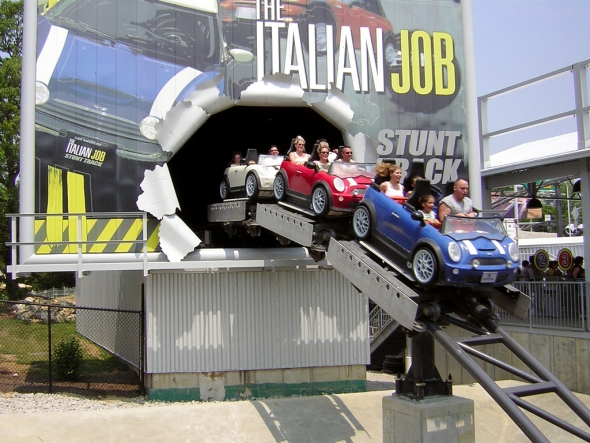
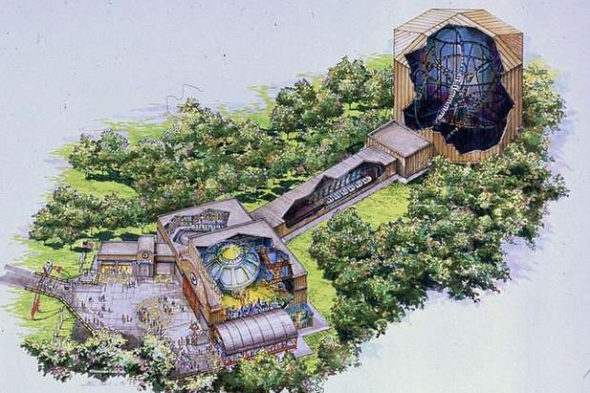
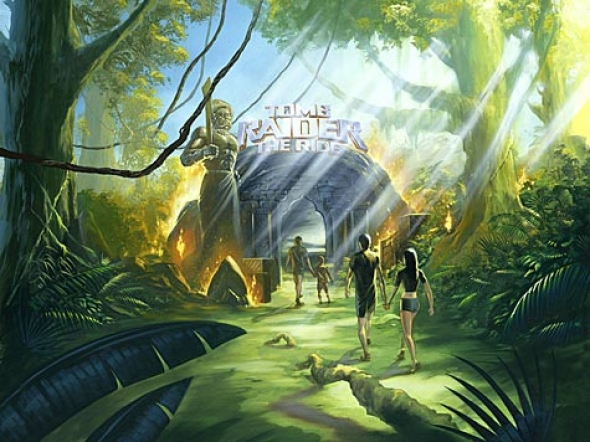
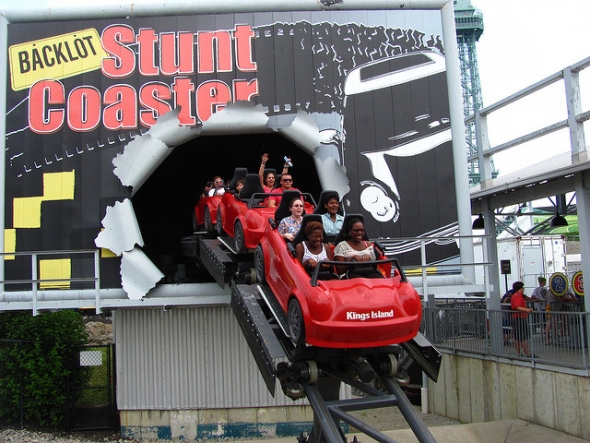
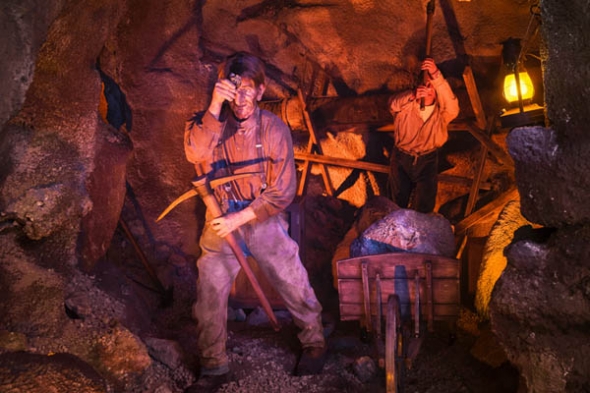
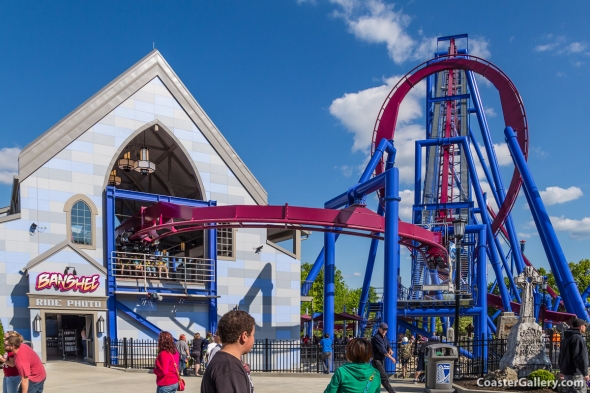
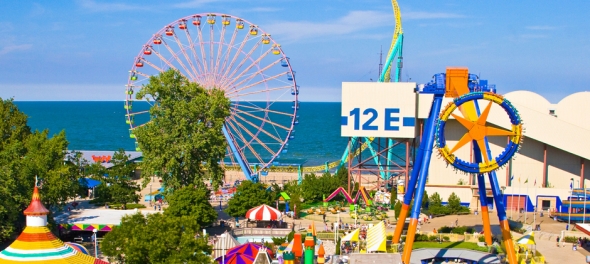

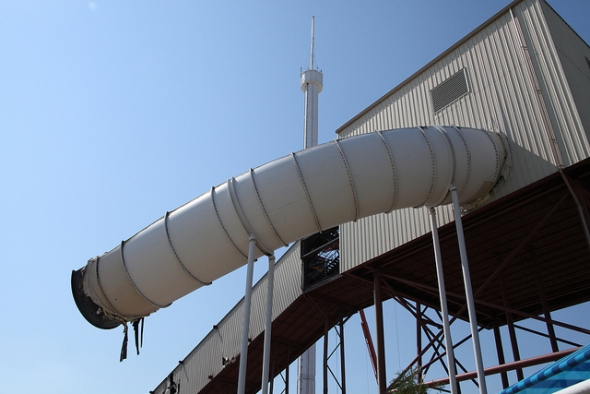

Comments
I live in the Detroit area, about 2.5 hours from Sandusky, so Cedar Point has always been my "home" park. Disaster Transport, along with the Iron Dragon, was one of my first "big" roller coasters. This was back in the early and mid-90s, when the ride was relatively new. And the theming was much different than in its final days.
There was an actual storyline: if I remember correctly, you were on a cargo route to Alaska, shooting through the stars to get there from Sandusky in record time. There were no glow-in-the-dark handprints in the queue. In fact, there were two large showrooms that used video and animatronics to set up a story. One was a control room (in the last few years, this was shuttered and used as Halloweekends storage)and the second room, The Repair Bay, had some robots doing some sort of shtick. As a kid, this was all great and entertaining. Even going up that final flight of stairs, there was some "pre-flight" safety video, and I even remember the tag the spokesperson would use: "At Dispatch Master Transport, we get you there on time, or we don't get you there at all."
The ride experience was also less cheesy (again, to a kid). I feel like the red chaser lights were added late in the ride's run. Originally, you'd have some sort of implement come down and "fuel" your car before starting the lift. I can't remember what sort of lighting was used, but I think it was just the star field. But the ride itself actually used quite a bit of theming in its heyday -- giant props, stars. There was even a video projector that had an explosion as you rolled by. Probably the most famous part is that, at the midpoint, your "onboard computer" would shout "I'm losing control!" and there'd be flashing lights and a few wild turns before ending. As a kid, it was great.
But your article really hit the nail on the head. In the last year's, this was a mess. The theming wasn't kept up and it just got worse and worse, until it was just a ride in the dark with no storyline and very few effects. I believe Kinzel actually called the ride "a dog" in an interview once. And the box it was in was horrendous. The last time I went to CP was actually in 2012, just a few days before the ride was demolished (it was already closed), and I have to imagine the view is so much nicer without it.
And it's extremely sad that CP has no dark rides. That wasn't always the case. In their early days they had Earthquake and, I believe, Noah's Ark. And growing up, they had a pirate ride that we loved. It basically used the track of a carnival haunted house, but as a kid I thought it was fun. It's now the arcade that looks oddly like a castle right next to Blue Streak.